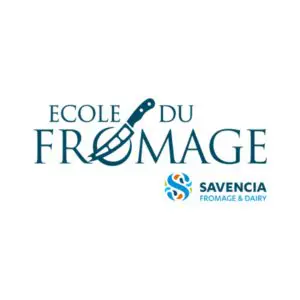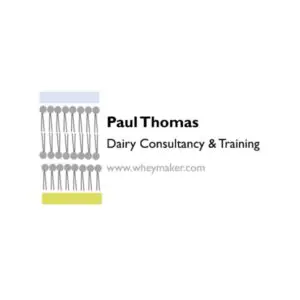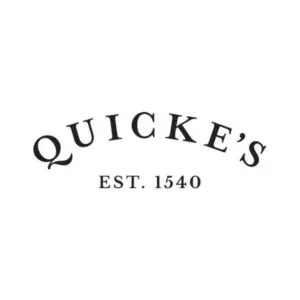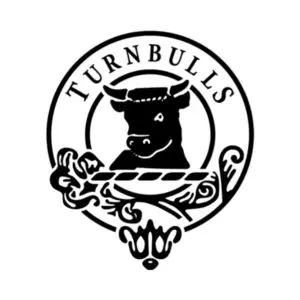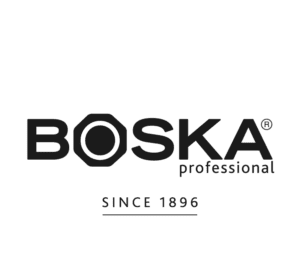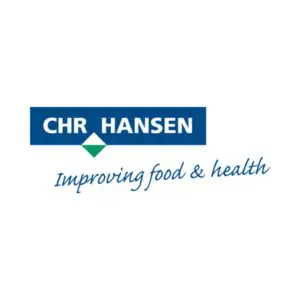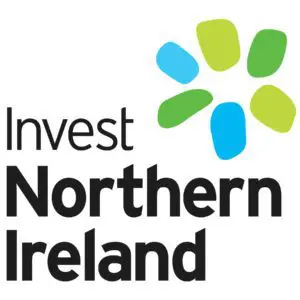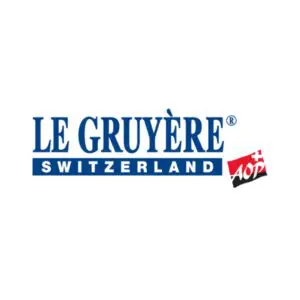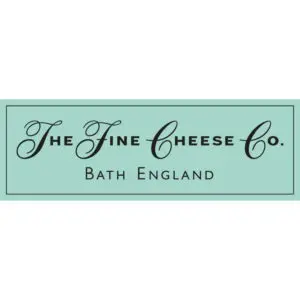Charlie is talking to Michael Davenport this Tuesday. We will be tasting Cote Hill Blue, Cote Hill Lindum and Cote Hill Red from their farm in Osgodby Lincolnshire. Michael talks about what makes his terroir so important to his cheese. Who: Michael Davenport; Cote Hill Cheese Cheese: Cote Hill Blue, Cote Hill Lindum and Cote Hill Red Subject: Lincolnshire Terroir
Streamed live on Jan 12, 2021
GUIDE TO TASTING CHEESE
Learn about the four stages of tasting cheese and how to take tasting notes with this definitive guide to tasting cheese.
Cote Hill Cheese Episode Video Transcript
Good evening everybody, let’s get rid of that thing welcome to 2021. I’d like to introduce everyone to Michael Davenport, we’re talking about Cote Hill cheese tonight. We are talking, he’s amazing he’s red his blue and his linden.
But first of all Michael we’re made out of 20 20s without anything you know we’re here the year is gone are you looking forward to the year coming yes i’m very positive about 2021 it’s going to be better than last year uh we had to sort of make a lot of changes last year all to the best to the good um and i think we’re going to build on those next year and now we’ve got the vaccine coming in i think you know there’s sort of we can see a bit of light at the end of the tunnel on that yeah no it’s um uh i don’t know it’s just been brutal it’s just been brutal i mean i i mean i don’t know about your christmas my christmas was me my wife two small children and some stockings that was a certain type of christmas day yes yeah well at least i’ve got a few dogs and cows to help along as well so uh-huh yeah so tell us about your farm um how many cows how many acres where exactly are you we’re just sort of north of market raising in lincolnshire so we can just the walls are about sort of four miles away um so we’ve got lovely uh picturesque uh views and uh we are 184 acre farm so quite small and with an 80 cow herd with followers so that’s the females that will carve next year and the year after to replace did you say an 80 cow herd yes 80 calories yeah yeah predominantly holstein friesian which are just introduced brown swiss cows which are very photogenic and but they’re also very good at producing very good quality milk fat and protein i mean you’ve been you’ve been milking you know i’ve got it down the bottom here you’ve got you’ve been looking for 50 years you know that’s your bread and butter skill um cheese making you know for a man of your experience and wisdom 16 years as a blink you’ve sort of come to it late yes yes we did yeah um born out of necessity really but it’s something that necessity often does sort of um they say is another invention isn’t it so tell us necessity why because you’re too small a farm to do anything else what’s that what was your thinking yeah pretty much that charlie yeah we’re a small herd sort of 20 years ago i was doing everything really so milking all the cows rearing the young stock i would get contractors in to harvest the the grass and the maize for making silage but otherwise it was sort of nearly seven days a week so um you know when you’re just in your 50s you think well actually can i do this in 10 years time and uh yeah 15. i can’t possibly comment i’m 15 this year you’ll do it at the moment i’ll tell you 10 years you won’t want to be milking cows yeah no probably right so so 80 cows let’s put some math towards that so how much cheese can you produce a year and does all your milk get used in your dairy not all our milk we’re producing round figures half a million liters a year and we’re using just over a third of that 200 200 okay so you’ve got capacity to expand we could if we want to yeah we have talked about that as a family but i think at the moment we’re just sort of consolidating and you know making sure we’ve got the cheese the quality of the cheese is going out consistently if you expand you know it can bring other complications so it’s something we we’re not ready to do yet or really it’s not really my decision now because you know ross and joe sort of stepping in to take it over it’s a family affair with you so you’ve got your wife mary who’s a cheese maker yes she is yeah yeah so okay it’s 2004 and went to learn how to make cheese and then sort of said tomarrow off you go so i carried on milking the cows and your your two boys ross and joe i mean what do they do uh you know it must be great to employ your whole family on on the farm cheap that’s a lovely family cheese supported adventure yes yeah i mean i’m so pleased it’s something that mary and i were you know so sort of passionate about interested in and we thought well you know there’s an opportunity there and we’ve got four boys so we did sort of put it out to all four of them if anybody was interested and so you put it out to tender um pretty much yes there was no financial rewards or anything it was just the joy of being part of a family farm and working in the countryside and joe our second son he sort of decided in 2009 she’d like to come and make cheese with his mum and and that’s when he first started with us and uh he’s now the you know the head cheese maker and he’s making fabulous cheese very consistently so let’s let’s put on things so you are a raw milk cheese maker not just a cheese maker you’re a raw milk cheese or all your cheeses raw milk yes yeah yeah because you know we were chatting before this raw milk is at the very difficult end of the cheese making spectrum you’ve got to have very great skills all the way from the pasture to the to the maturing rooms why did you choose what milk well i’d sort of be milking couch as i’ve said many years and always producing this i thought fantastic quality product and then it would just go off in a vault tank lorry and get processed and disappear and just become a bit of you know white liquid in the bottle and really wanted to probably put a sort of an identity to the the milk that i’m producing on this farm so it was pride in your product that made you want to sort of make it and i think all dairy farmers do take pride in their cows and unfortunately just you know the way they uh system set up for for milk production um for liquid milk and for big scale cheese production it it just becomes a commodity whereas you know myself i thought you know we’ll make it a little bit more unique bit more niche and you know that’s what you know other dairy farms have done you know since we started making and of course you know quite a few doing before us yeah you’re sort of mid-range in the cheese renaissance thing you know we’re kicking off the in the early 90s you’re i mean 16 years ago unfortunately for people like us it’s almost like a blink of an eye so you know you’re you’re in that second wave a lot of good quality so let’s not relate delay any longer introduce us to your cheeses what do you make what do they look like how they’re made let’s taste them well we make there’s actually four cheeses but tonight we’re introducing three of our cheeses so it’s not very um clever but it’s coattail red uh cotill blue and then the one that is a bit different is the one that joe developed which is a wash rind cheese and that’s our coat of lindem and it’s named linden because uh that is the roman name for lyndon colonia which was the the roman name for lincoln uh which is the cover oh was it yes ah that’s new information to me so it’s it’s coat hill lincoln 2000 years ago yes that’s it yes right cool okay well that’s cool um so which one would you want to go with first and i mean i’m this is there’s a clue i think this must be the code red that’s it charlie you’ve got it yeah so yeah should we start there yes i think that’d be very sensible know your cheeses and did my research you described this as alpine influence so what does that mean it’s the flavor is more you what you would expect to find in the alpine cheeses so it’s not a conte but it’s that sort of end of the profile so there’s a bit of sweetness there a bit of nuttiness and it’s not sort of acidic it has a lovely sort of smell when you just open the packet and then it’s not a pungent cheese after that but it has got a very um i think appetizing smell uh the red is um unfortunately just a plastic coat that we applied to uh mature so so you painted it on yes yes it’s not not natural i’m afraid i’d love it to be now so we we need to cut that off and uh it won’t hurt you if you eat it it’s just a little bit chewy though yeah there is a lot of cheese makers use it i mean it’s really sort of uh superseded the the lard and the and the muslin it has yeah yeah yeah um uh linkage poacher also neighbors of yours use it and anybody kind of thing works very well on their cheese and so we made this this it all was it was born in 2010 when joe joined the the cheese team we applied for a grant to expand the business so we started in 2004 quite small and then were produced nine tons and we just hadn’t got enough rooms so we got a grant to expand it further add more rooms on bespoke maturing runs to the cheeses that we’re making part of the grant requirement was a development of a new cheese and an original idea that we would try and develop a wash rind cheese which is the coach of linden i did try and do that but unfortunately i realized very quickly that it was going to take a little while to develop a wash rind cheese successfully that was consistent and tasty that is the equivalent to inviting a rave into your dairy washed ryan says ah more molds more bacteria more yeasts come on in see what happens yes so it didn’t work and but the outcome of the grant was we had to um meet certain criteria one of which was a development of a new cheese so so outline how it’s made what’s it is it is it a cheddar is it gout or is it a gruyere what’s what’s what’s it doing uh well it’s it’s um it’s sits on its own sort of merits really it’s uh something i think we use the similar sort of recipe that we made our coat of yellow which we’re not tasting tonight which is a sort of an e down style pasta okay so is it a washed cheese uh no no it’s it’s it’s basically um made about uh 42 degrees uh quite warm it’s um the curd’s fairly very dry um so not a lot of moisture in it and then we actually have fill two molds and then put them together so one on top of the others so okay sort of make this bigger cheese and then gets painted with the the red coating and it sits in the maturing room we hopefully for four months because it will start to develop the flavors um we were selling it out at two months and it’s very bland but the longer it goes on i would imagine so this is a cheese that would you know i imagine it would go to 8 12 maybe even 16 months your your plastic coat is holding it from trouble and these these are flavors that could go on and on i would have thought do you try holding it later uh well yes by accident because mary actually found um and i think she realized it was about um was it 18 months old yeah so he got to the back of the store and we hadn’t realized he was there it went straight onto the chicken food pile um so this first so yeah i read it from the chickens it hadn’t gone to the chickens it was about to go so yeah and it was absolutely delicious there were crystals in there it had dried out and i i think i think that you should yeah i know i would definitely say it so by the way you’re not the first person who’s told me they’ve lost cheese every now and again some really well-known cheese makers big cheese make not the dairy crest as well but you know big cheese in our world hey look it seems astonishing to me that you can lose a palette in your storeroom somewhere yeah well it was only one cheese it’s not huge you know it’s only one i well this cheese is a prime candidate for our long hold i really do i think it’s got um uh lots of interesting flavors that will produce those caramel notes those dry notes that interesting sort of break texture uh uh well the trouble is it’s very tempting to say for six months because then the money comes in and we don’t have to worry about it yeah no i’m not not not against that it’s it’s it’s it’s our dirt little secret our whole industry is we talk up the passion and the raw milk and then then someone pays us a few quid and we’ll go yeah that’ll do you know we’ve got to live charlie i mean you know yes well i was we i was mentioning this to a large cheddar maker and he reckons that in his store there’s two million quids worth of street value cheats and you cannot build that up over 16 years 16 years feels like a long time to some people but that’s built up over decades you know and that’s it’s it’s it’s quite dead money it’s a bit harsh but it’s like yeah it is yeah yeah you keep it longer it all costs a lot more doesn’t it but it does it’s a big expense it’s a big expense um right so what flavors do you want from your um coat hill rage what is it that you look for when you think it’s it’s best um it’s um so a bit of sweetness to it and the slight sort of then savouriness starts to come in a little bit um very low on acidity it’s not a sort of an acid cheese it has got some acidity it’s it’s got hints of um softened cheddar flavors if if yes yeah the young the very young cheddar yeah well not yeah but it’s got it’s got bits of marmite um yes yeah so some sort of some some some densum army i would go even so some vegetal notes some resonance notes um but it’s predominantly kind of got that butter cream uh thing which is which is very very pleasant very good i’d retain that sort of identity milk and it and it you know i think on our blue cheese as well you know we get that coming through at the end and after you get all the complex ones and the most the ones before the subtle ones sit on your tongue and it’s sort of it’s got a good length of flavor which i think is another good um test of a cheese it’s how long it stays in your mouth and uh the other test to choose that i i like cheese when i was a cheese manga when i was selling cheese was um does this does this sell across the spectrum does someone who doesn’t know cheese very well like it as much as someone who has is quite demanding about the cheese and this feels like it would be cross-sectional i i think that um uh um at the you know for judge standards they’d want another three or four months on it but from a cheese board standard is it going to please the whole family and nails it i think yeah well it’s very popular with our local lincolnshire and they do like this cheese very much so the other key thing is in the starter that we put in it’s got helviticus in which is giving us you do put some helveticas in controversial circles um i think it is in the cheddar world but you know for us um you know it’s just really to get a cheese that reflects the milk that we’ve got and makes a different completely different cheese to our other cheeses that we’re producing here all right let’s let’s take it on your linden your link yeah go to coat of linden now that is a natural ryan charlie so it is yes so this is joe’s little baby or big babies um and he’s developed this over the years he’s producing a very consistent lyndon and in fact he won the best um new cheese at the british cheese awards back in 2013 2014. well done him yes yeah and then the year before that he actually had one at nantwich the the best novice cheese maker um so that was interesting because uh nantwitch is a whole row of blocks of um i know it well yeah it’s an interesting one because which has a it’s a full spectrum cheese show you get every from the big producers to the small producers everything’s there so it’s quite quite funny to see all these big hugs of cheese and then there’s a linden and then your little guy comes alongside and steals all the sunshine so i’m looking at this cheese obviously i’ve only got a little bit but i’m guessing this is probably about a low and a half maybe just out of two kilos went whole yeah a kilo and a half yep somewhere around there and is it is it is it inspired by a particular recipe or is it kind of like from a number of places um no it’s just i’d sort of made the coattail blue and we’re sort of getting very recognized for that and you know quite like a challenge let’s make a wash rind cheese because i think that seemed to me at the time ten years ago was a growing interest to people i think everybody knew about stinking bishop and you know but they’re a little bit sort of an acquired taste i guess or a required smell um yes or the smell acquires you one way or the other well so i thought well you know we could probably sort of make a cheese that you know is going to mature for longer than a soft mind wash cheese and this is sort of what sort of came up with so i think i sort of um started it off and then i said to joe well look you know can you develop the wash rind cheese so i think probably about 18 months two years on from that he’d been on a cheese making course at um um welbeck along with ivan so he obviously learned from the master on what rhine cheeses and he came back and then you know that’s when you know the coat of linden really was um really developed and took off so um um it’s it’s an interesting one because i’m tasting it so the flavor of the center um has a lot in common with your red it’s it’s very butter centered um and the and the washed rind element really comes through on the rind and sometimes i get asked when i’m doing cheese training or whatever it is do i eat the grind this would be a good example of yes you must because a lot of the accent of this cheese its individuality comes from its rind it does yeah yeah and this is you know really handcrafted i mean it’s amazing it’s a bit of a cliche but joe is in that linden maturation room so two or three times a week washing out each cheese with um with the local beer um i was watching in beer sorry i didn’t catch that bit yes yeah we have a local um we’ve got quite a few local breweries in lincolnshire and we’re now we’re using um a beer from ferryels brewery which joe uses uh just to sort of give a the right sort of climate the right sort of surface for the the linings to grow and um he does that very well um there is nothing you don’t put beer on your label i must have missed that um uh you should put that it’s probably not a big part of the of the cheese i mean i think it’s sort of on the back label since when did marketing respect size no man just just just just get it out there we need the people need to know but it’s interesting that you’re using a local beer um one of the things i wanted to ask you is what is it about lincolnshire that you think adds to your farm you know what are your milk your cows what what what’s bringing what flavor is coming from the toma what is special how to define what exactly it is here but all i can say is that 180 acres of here the milk that’s where it comes from it’s very concentrated in that one area and the soil type we’re on is sort of sand sandy alone over over clay um then not far away going up to the chalk chalk walls which is quite a different soil type um where linkage of poacher are there more on sort of clay soils i believe um down south lincolnshire you know this is it’s the fen lands it’s pt so in lincolnshire there’s such a diverse range of soil types that um you know you’re going to get this individuality i mean it’d be interesting if we could have you know another half a dozen dairy herds producing cheeses you know from south lincolnshire sort of from the top of the walls um towards the trend you know they’re all got different soil types and i i think they produce quite different cheeses but unfortunately lincoln’s just not a noted dairy county yeah i should be should be it’s it’s not got you’re right so i have a theory and you know i have a lot of theories that have no basis in fact so feel free to shoot me down that actually cheese maker is not centered around grass but she’s making a center around for salt if you if you look at the areas where salt was readily available that’s often where we’ve got our oldest cheese making uh histories yeah um yeah and and you don’t have salt where you are so maybe that’s part of it i don’t know yeah yeah yeah i think grass is partly to do it as well i mean we we don’t get the water um the rainfall that they do on the west side for sure and uh you know the land is is sort of probably more easy to to to till you know when you’re using horses and plows it was easier to turn over wildland so i’ve got a question here um from allison um are your cows fed sighs in winter now i’m gonna guess here that allison is talking about um some of the alpine cheeses very much avoid silage because of the acidities that allow some of the is it the collie forms i can never quite remember um giving blowing issues so is it something that you’ve had uh that you need to chat to to to to challenge take on no not um we do feed the cows grass silage but we do you know like everything at the beginning you said if you’re producing raw milk everything’s got to be right so right from the soil to the crop growing how it’s harvested how the cows are housed it all plays a part in getting that milk in you know ideal condition for making cheese so when we’re making silage we made sure there’s no soil contamination which is where the bacterial contamination would come in we make it quickly we use contractors so we’re harvesting 48 because and it’s probably done in about four hours it goes into a into a big clamp and then the fermentation starts and you’re trying to get this sort of lactic bacteria to like facilities to grow which is sort of similar to milk and everything else and that knocks out the others it does it out competes them and so we’ve got a you know a lovely food and it’s interesting you know they we do major on milk production from grass and from size and from maize growing on the farm and our cows are producing over 5 000 liters of their annual production just from the forage on the farm which wow quite a big number all right i think it’s time for your big gun because is it fair to say that coat hill blue is your sort of standard yeah standard bearer it was our first cheese that we made along with that’s it and uh it’s the one we’ve won quite a lot of awards with and it is our biggest seller of charlie so that’s looking pretty good to me unfortunately and i’m very pleased you sent me a nice big chunk here so i’m just going to ask a few questions so we’ve got this sort of a firmer crumbly uh element towards the middle and we’ve got to get quite a gooey edge there we can see that there’s cement so we’re getting breakdown coming in from the rind and we’re getting breakdown from the bowl from the mold in within the cheese so you’ve got two different processes in play here yeah so which is it presents a bit of a challenge so if you get too much mold on the outside you’ll get too quick a breakdown around the um the into the the paint inside near that rind and therefore you can get some slippage um if you get it too dry then you won’t get the the softening from the mold inside so it stays a little bit sort of firm um so we can have our coat of blue sometimes it will mature a bit quicker and go very runny very quickly another time it will mature longer and will stay firmer and actually goes to more of a texture of the butter very difficult to say which way it’s going to go and it depends a little bit on that oh yeah yeah well yeah but you’ve got all sorts of microorganisms in there doing their best to win the day so i mean it’s it’s quite you know it is a challenge but i’ve been interesting just to sort of bring out the thing you said that you get slippage let’s let’s expand on that i assume you’re talking kind of a slip coat effect where just under the rind we’re getting a very very liquid cheese element and the rind itself becomes detached from the cheese that’s it yeah so it doesn’t happen very often but it does happen and it’s usually when that rind on the outside just gets us a little bit too accelerated it grows a bit too quick too much of it was this your first cheese that you made yes that so that was i went on a cheese making course in 2004 and chris ashby who you may have heard uh valencia she taught me so yes and um they put did these courses you know as an introduction wave of starting cheese cheese making and i went on one of those and uh that means that’s it yeah yeah so you know they said well these are recipes that we’re doing if you want to uh and chris ashby had developed her own ashby blue she said you’re very welcome to use the recipe so i came home and i thought well actually i don’t want to make it exactly like that which was you know a small stilton type thing wrapped in foil um i wanted to make a blueberry type if i could so i sort of changed this change that changed that and coated was born i think just more luck than judgment um i’m i’m i’m not i’m michael i would never say it’s more luck than judgment but i am going to raise the point that you certainly went in at the deep end trying to pull this off this is not easy to make no i hadn’t realized at the time i thought it was going to be easy doesn’t sound like you did but then again you know to be honest i i deal with a lot of businesses of all types of food and all of them small and uh if people knew what they were getting into three quarters maybe 80 wouldn’t do it naivety is the big piece of the jigsaw when it comes to starting your business that you cannot do without i know it sounds like a weird thing to say but it’s true but i think the other thing well with when we’re developing these cheeses um i remember sort of you know making about a small batch putting it in the little fridge to mature on and it was interesting to see how how it you know which way it went and in a way it’s got a life of its own and you either fight it which i think if you need to do that you’re gonna pasteurize your milk and just have it quite standard or you can say well we’ll go with it we’ll manage it it’s a living organism you know if it’s a little bit growing too much mold make them a bit more drier or maybe just to cool the temperature down so it’s tweaking this tweaking map and you know it’s hard work uh but i think the result is worth it so all right so we i’m i’m looking what two months here something of that order is that uh yeah yeah spot on so we’re it’s a very actually for cash flow it’s a brilliant cheese because it’s sort of in after three weeks and we can start selling it and uh but it is very young so the three four weeks you’ll get that chalky nearly talking all the way through and it will have to be very lastic and just be sort of live milky notes with very little other things well completely different cheese sorry completely different cheese it’s still yeah it’s the caterpillar not the butterfly at that point it is very much so give it sort of just another couple of weeks up to six weeks and it’s just starting to change and then if it’s all right you know we haven’t got too much mold we’ve got the moisture right you know it goes on to eight to twelve weeks and then it can really get sort of complex uh stronger flavors and you can go quite sort of say by the buttery or just go a little bit running um we’re beginning to sort of get up it’s been really interesting really getting up towards the edge of our 30 minutes i want to quickly ask because that’s just a question being asked by allison again actually um you don’t need all this at least i don’t believe we did yeah mary does uh yeah we do where is it are we going in from the sides is it going in that way or from the top or oh michael it’s like cinderella the midnight bells have struck and he’s had to go back and there’s uh i know he’s back no i’ve done anything i’m here yeah okay yeah no they are pierced with about sort of 40 pieces somewhere around 40 pm and where are they going in from the side yes from the side yeah that’s it okay look carefully you should be able to sort of see right i can see that so those blue lines are horizontal yes that’s right yeah yeah so you know that was mary’s job off she’d made it was to pierce all these cheeses um the labor of love which was just a little um kebab skew with a handle on certain yeah yeah and when she got he went in pierce cheese [Laughter] yeah so take it out of the cheeses yes than others um i just want the other thing i want to just bring attention to we’re talking about it getting soft i don’t know if you can see all this but this is almost like i’ve got a balloon-like texture under here um where you’ve really got some breakdown underneath this edge i mean this outside skin is it’s a hodgepodge isn’t it of i mean it feels like there’s a lot of penicillium rock 40 on the top i mean on the outside but it’s not just that no i mean when it starts to grow blew up in the in the maturation probably after a week uh maybe five days you’ll just get to sort of like a bluey or even the greeny tinge on the top um and the time that will sort of increase but then there will be some sort of white blotches coming as well which is probably some sort of um candidian uh or rock 40 um you haven’t you haven’t spent the money to some expensive laboratory to find out uh no no we’re just we accept that it’s there and it’s quite interesting to look at i think isn’t it it is it’s a lovely cheese it’s a lovely cheese look at um and uh we’ve not really talked about it so you michael have 30 seconds to describe the flavor of the cote hill blue ticking now what does it taste like it’s got peppery notes and it’s got a sort of um not an overpowering pepperiness it’s you’ve still got that background flavors of of the milk um and there’s a bit of mushroomy herbaceous type flavors there as well so it’s quite a mix of all three and then gradually towards the end you get more of the of the milk feel um it’s interesting when mary’s been on the farmers market and we’ve done tastings people come and taste it and they oh that’s nice they wander off they suddenly come back after 30 seconds that cheese is fabulous i’ve still got to taste it i’ve got to have some so the cheese just sells itself it’s amazing it’s complex i mean compared to the other two it’s compressed complexity feels like it’s at another level you’ve got burnt notes you’ve got um herbaceous almost hoppy notes you’ve got as you say some butter and you’ve got some there’s a little bit of caramel mixture or possibly toffee is a sort of sweetness at the center um and plus all the all the blue brings to it so it’s an amazing cheese it feels really um it’s it’s kind of controlled wild if that’s if that makes kind of sense thank you i like that phrase very much yeah yeah we just keep it on the long lead that’s all so yeah well if you speak to any um uh raw milk cheese maker it’s it’s about controlling the chaos it’s about shepherding those bacteria um you can’t tell them what to do you can just try and stop them doing to anything too weird yeah that’s it that’s it it’s been a pleasure to talk to you michael thank you so much for coming on especially our inaugural 2021 let’s hope everything about the 21 2021 has been as good as this talking cheese with you tonight so thank you very much i’ve been a pleasure charlie thank you very much i’ve enjoyed it very much until next time bye right eo team what a nice man what nice cheeses well she’s and actually kind of he always like should belong to the lincolnshire tourist board sorry dog present um she obviously likes the cheese as well uh where was i lincolnshire tourist board clearly stay on message right this year this year we are back the academy cheese has survived thank god 2020. um we are into 2021 we’ve hopefully are going to just smooth plain on say there’s lots of training and cheese learning to be had if you want to get on to that i’ve got level 2 and level 1 courses going through for the next three months other trainers are up there too so come and learn about cheese it’s all about the tasting i don’t know what else to say except thank you very much for staying with us through 2020 great into 2021 let’s just think great positive thoughts about the amazingness and luck that we’ve had just to be able to talk cheese quietly on tuesday nights see you next week bye for now
